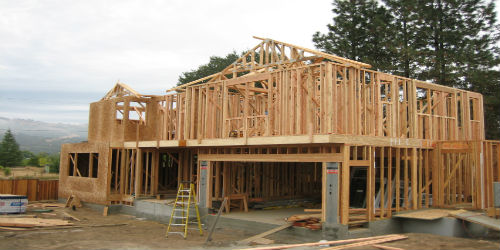Residential Development

The Permit Sonoma Fire Prevention Division provides fire code plan review and inspection services for the following areas:
Bennett Valley, Bodega Bay, Cazadero, Cloverdale unincorporated, Forestville, Geyserville, Glen Ellen, Gold Ridge, Graton, Healdsburg unincorporated, Kenwood, Monte Rio, Occidental, Rancho Adobe, Rincon Valley, Russian River, Schell-Vista, Sonoma Valley, Timber Cove, Windsor unincorporated, and Volunteer Fire jurisdictions.
Please review this document prior to submitting plans for your project. Completion of the noted requirements will assist in the timely approval of your project.
Roseland Fire District is part of City of Santa Rosa. All buildings located in the Roseland Fire District will go through a review with the City of Santa Rosa. For information on this process please call (707) 543-3500.
Sonoma Valley Fire Rescue Authority currently reviews all residential development when reviews and inspections are required in their jurisdiction area. Sonoma County Fire will validate the need for review and route the plans to the district for approval. Additional fees may be accessed to projects in this area.
Plan Submittal
Four sets of plans shall be submitted to Permit Sonoma for review and approval prior to construction. A Fire Inspector will review your submittal for fire and life safety compliance. Please review the specific requirements regarding your proposal. Identified requirements should be addressed with your plan submittal.
Fire Sprinkler Plans only require 2 copies of the plan, 2 copies of the cut sheets and Hydraulic calculations and are submitted to Permit Sonoma.
Each approved plan will have an approval stamp from the Fire Prevention Division. Conditions may be identified which modify the actual plan approval. It is essential that the conditions be reviewed and requested changes be made to the plans or on the job. These conditions will be enforced before a fire final will be completed.
Inspections
The process:
- Schedule inspections via the automated inspection request system.
- Enter your permit number and the inspection code. Inspection code numbers are listed on the issued permit card or available online.
- Schedule inspections a minimum of 24 hours in advance using the automated system only.
- Field inspections will be completed by a Fire Inspector.
- Please ensure the approved plans are on-site for inspection.
Inspections may include but not be limited to:
Foundation Inspection
Inspected for compliance with access; fire protection and vegetation management requirements prior to combustible construction.
Fire Water Supply Storage, Supply Lines and Fire Hydrants
Inspection of the underground fire line system will include location of water storage and wet stand pipe location. These inspections shall occur prior to combustible contraction if there are no other approved fire hydrants within 150 feet of the building pad.
Fire Sprinkler Inspection
A hydrostatic pressure test of the overheard sprinkler piping to ensure there is no leakage, locations of sprinklers to obstructions are compliance with approves plans. A final acceptance test to ensure alarms and designed flow requirements are met.
Building Fire Inspection
A final building permit clearance to ensure fire and life safety compliance in accordance with the approved plans. Access roads required fire protection systems, water supply, and fire hydrants shall be complete and accepted by a Fire Inspector for occupancy.
Building Addressing
All letters, numbers and symbols designating a residential building address shall be minimum four inch (4") letter height, three-eighths inch (3/8") stroke, reflective, contrasting with the background color of the sign. Buildings located further than 30 feet from the street and multi-building complexes shall have an address posted at each driveway entrance. The address shall be visible and legible from both directions within 100-0 feet of travel along the road of which the address is located.
Utilities
Liquefied petroleum gas (LPG) shall be labeled and secured to prevent movement in seismic locations and flood zones. Tanks shall be strapped per the California Fire Code and of Fire Safe Standards. All tanks shall have approved setbacks to property lines and building based on the total volume of the tank.

 Translate
Translate